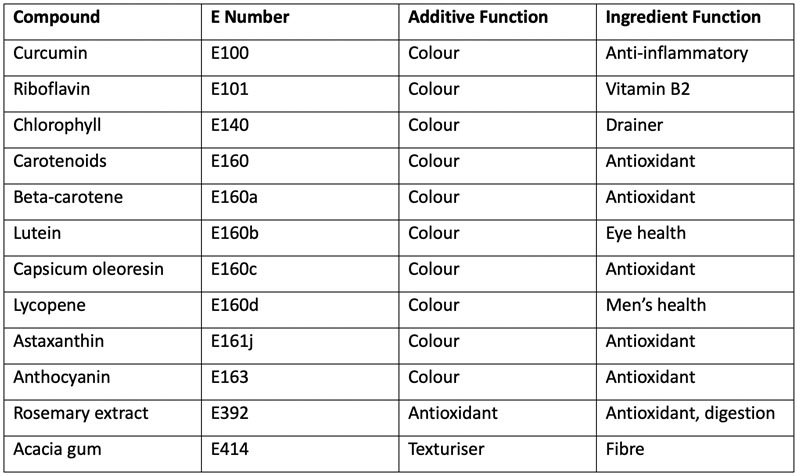Consumers are looking for natural, more authentic products that have been formulated without chemicals (ingredients or additives). Clean Label claims must meet these expectations and are based on a few key principles:
- reduce the number of ingredients used
- use clear terms on the label to reassure the consumer
- reduce allergens and additives
- replace artificial ingredients with natural products.
If we look to the past when multivitamin products were made of synthesised vitamins with artificial texturisers and colours, the pills looked like “pieces of plastic.”
Now, with the new paradigm of consumption, incorporating organic, natural and, of course, vegan products, these kinds of ingredients and additives must be replaced by natural and vegetal origin ones.
The substitution of synthetic chemical products also favours environmental preservation by using ecofriendly extraction processes.
In Europe, moreover, regulators have started to review “the list” of additives … and some have already been removed from the official roster of authorised additives.
It has even been noted in certain European directives that some synthetic food colours may have an adverse effect on the activity and attention of children.
Labelling on packaging
In Europe, ingredients are listed by names that, more often than not, describe what they are. Yet, additives are classified and registered with an “E number.”
And it doesn't matter whether that additive is synthetic or natural, the number is the same. So, on the packaging of your product, you may find a list of E numbers.
Aligned with consumer demand, it would easier to distinguish between the natural ones and the others just by changing the E number! But … the regulation is not evolving in this way.
What is interesting, however, is that some additives may also be ingredients, including vitamins, carotenoids and/or plant extracts (Table I).

Table I: The dual additive/ingredient characteristic of certain compounds could represent a way to meet clean labelling expectations
The clean label movement
The benefit of clean labelling, which is a way to differentiate yourself from the competition, is two-fold. Consumers could more easily understand the composition of the products they purchase, and formulators can demonstrate their efforts to make their formulas more natural.
Ideally, from a formulation point of view, using these types of compounds could be very valuable; the active principle that delivers the product’s physiological effect might also determine its colour.
Or, in another way, you could add a colouring agent that will act synergistically with another active principle or reinforce the activity of your formulation.
As an example, our oily Vi-spo saw palmetto extract — for the management of benign prostatic hyperplasia — can be synergistically coloured red with lycopene. Table II highlights some application suggestions of colouring agents from Vidya Herbs that are also active principles.

Table II: Colouring agents that are also active ingredients
